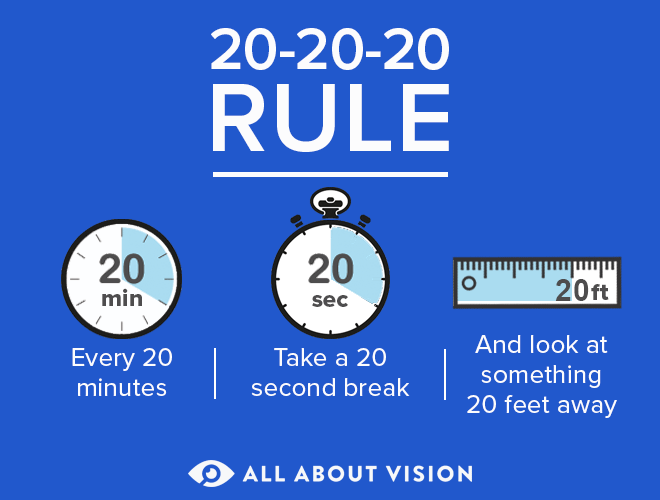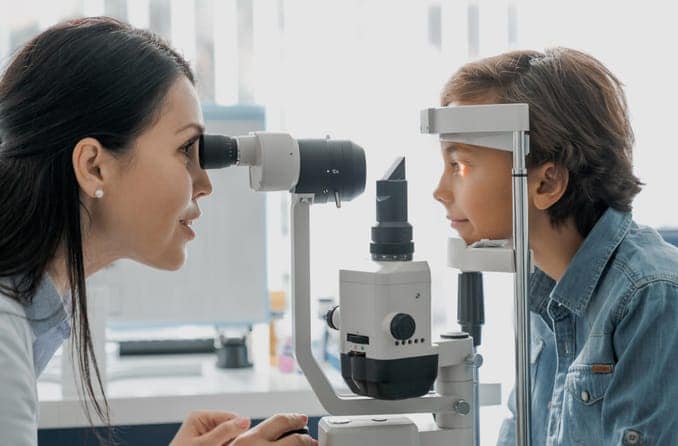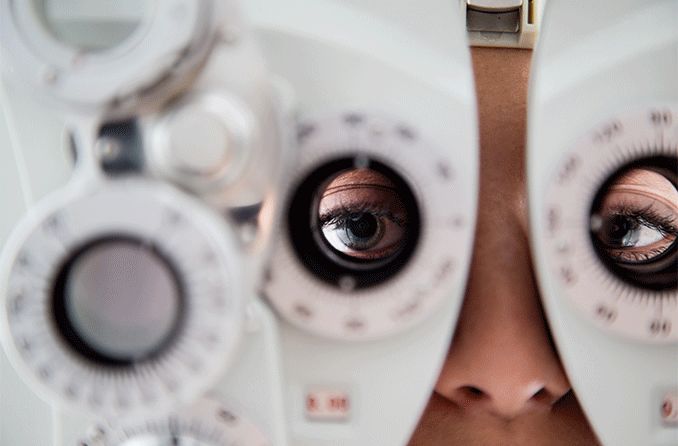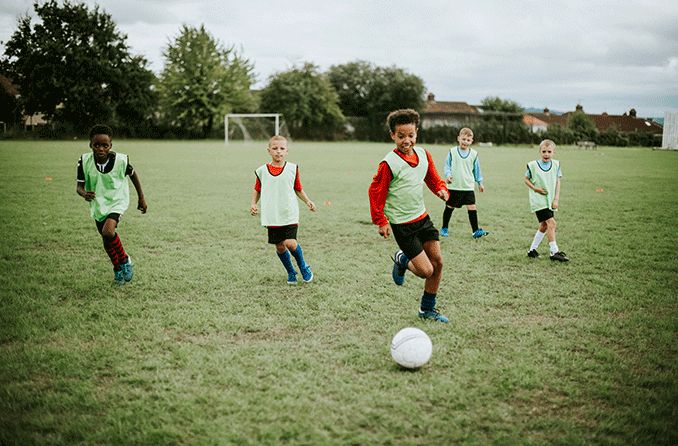Children and technology are practically inseparable these days. Whether for educational purposes or just fun, children are spending a good portion of their day on "screen time" — staring at the LED screens of computers, tablets, smartphones and other digital devices.
According to Common Sense Media, children under age 8 now spend more than two hours a day with screen media. For 8- to 10-year-olds, screen time triples to six hours a day. And it's not unusual for kids in middle school and high school to spend up to nine hours per day looking at digital displays.
If you're wondering if all this screen time might cause problems for your child's eyes and vision, the short answer is: "Yes, it does."
SEE RELATED: Screen time recommendations by age
Risks associated with too much screen time
Children who spend multiple hours staring at digital devices are at risk of developing these vision-related problems:
Computer vision syndrome
Computer vision syndrome — also called digital eye strain — is a condition that's caused by visual stress from extended screen time.
Computer vision syndrome has a combination of symptoms, including: fluctuating vision, tired eyes, dry eyes, headache and fatigue. Other non-visual symptoms of computer vision syndrome include neck, back and shoulder pain.
Computer glasses can offer relief from digital eye strain.
RELATED READING: What are the effects of too much screen time?
Unhealthy posture
When using a computer or digital device for prolonged periods, it's common to start slouching inward, rounding the back and shoulders, and then tilt the head back and jut the chin forward. This unnatural (and unhealthy) posture — called "turtling" — leads to many of the non-visual symptoms of computer vision syndrome.
Nearsightedness
Vision researchers believe increased screen time among children is a significant risk factor for the development and progression of nearsightedness (myopia). The prevalence of myopia has grown significantly in the last few decades and this trend coincides with the increased use of computers and digital devices by children.
Blue light exposure
High-energy visible light called blue light is emitted by the LED screens of computers, tablets, smartphones and other digital devices. However, the most significant source of blue light exposure is natural sunlight.
What to do
It's not realistic to think that children will stop using modern technology. But there are some easy things you can do to decrease your child's risk of eye and vision problems from prolonged use of computers and digital devices:
Encourage frequent visual breaks

One of the best things you can do to reduce your child's risk of digital eye strain is to get them to follow the "20-20-20" rule: Every 20 minutes, take your eyes off your screen and look at something that's at least 20 feet away for at least 20 seconds.
This simple task relaxes the focusing and eye alignment muscles, reducing the risk of many of the symptoms of digital eye strain.
The 20-20-20 rule also might decrease the risk of myopia progression. Some research suggests focusing fatigue may be associated with the onset and worsening of myopia. Taking frequent breaks from staring at digital screens helps reduce this fatigue.
Encourage frequent posture checks
The time taken to follow the 20-20-20 rule is also a good time to sit up straight and realign the head, neck and shoulders. Moving the head slowly to the right and left and also up and down can relieve strained muscles and reduce fatigue.
If it's possible, getting up to walk and stretch the entire body also is a good idea to reduce the risk of non-visual symptoms of computer vision syndrome. [Read more about computer ergonomics.]
Consider Computer glasses
Computer glasses may be beneficial during prolonged periods of computer use. They can help your child focus more comfortably at a closer distance and decrease glare, as well as some blue light. Currently, no one knows for sure what the impact of blue light emitted by computer screens and digital devices might be over time. It may take researchers decades to sort that out. It’s good to remember, though, that the main source of blue light is sunlight, not computer screens, even indoors.

Digital devices such as tablets can cause eye strain in kids, so monitor their use as well as that of desktops and laptops.
There are many eyewear options to make your child more comfortable indoors and protect their eyes from the sun’s rays outdoors.
Outdoors, polarized sunglasses offer the best protection from glare and ultraviolet (UV) light as well as blue light.
For indoor and outdoor wear, photochromic lenses such as Transitions lenses (Essilor) are an excellent choice.
For indoor wear, eyeglass lenses with an integrated blue light filter can provide superior comfort.
Be aware that different eyeglass lens companies may measure blue light filtration properties differently, and lenses with the most effective blue light filters have a tint that will affect the appearance of these lenses.
Finally, certain anti-reflective coatings can help eyeglass lenses filter blue light and reduce glare.
Establish media-free times

It's a great idea to establish media-free times each day to break your child's fixation on digital devices and reduce eye fatigue. Use this time to connect as a family.
Schedule annual eye exams
Finally, schedule annual eye exams for your children prior to the start of every school year with an eye doctor near you.
In addition to making sure your child's eyes are healthy and seeing well, your can perform special tests and provide specific suggestions to reduce the risk and symptoms of computer eye strain.
Children and technology are the future. Taking these simple measures can go a long way toward keeping your tech-savvy child seeing clearly and comfortably for years to come.











